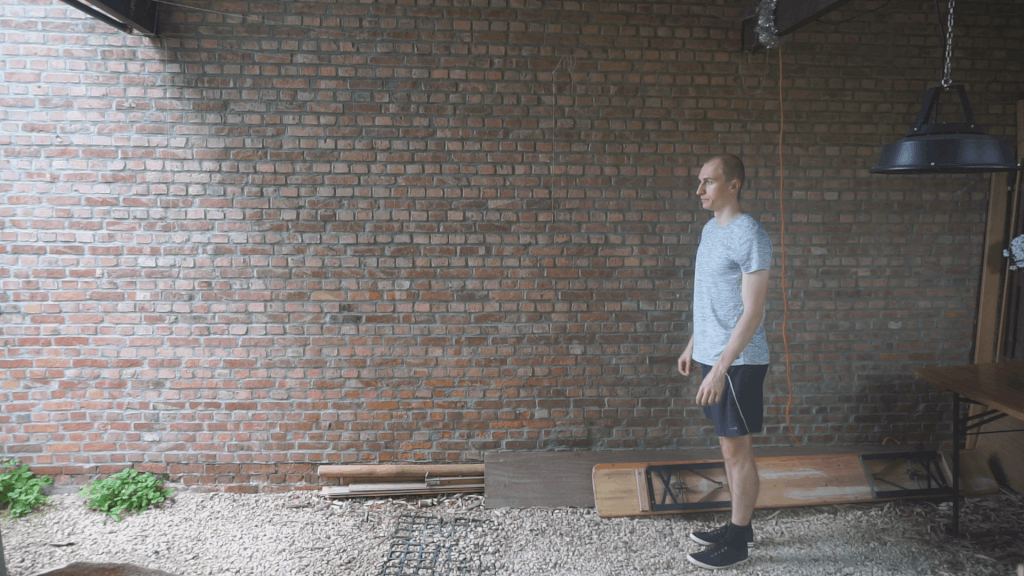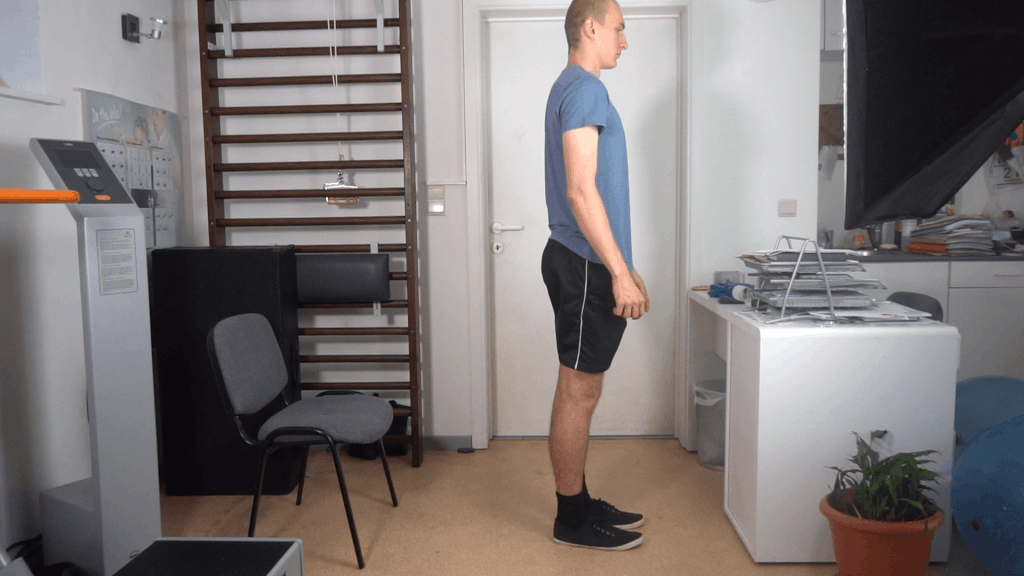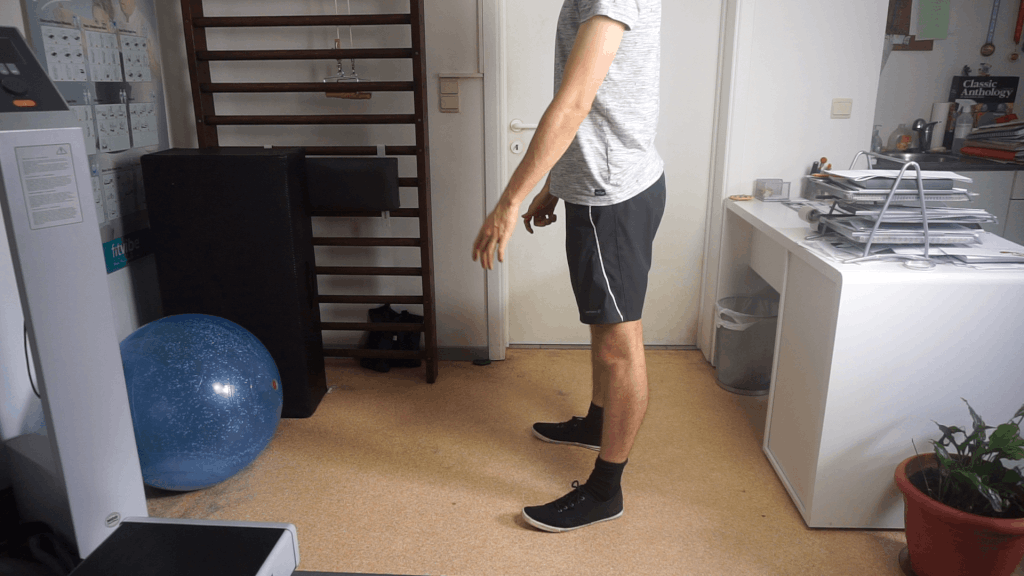The step-up exercise can offer many benefits but you may want other options. What are some alternatives to step-ups with similar benefits?
Step-ups, both with body weight and extra weights, are a popular resistance training exercise you can describe as taking steps on and off an elevated platform.
Some of the benefits of step-ups include that they can strengthen your leg muscles, they are an exercise you can do at home, they are low-impact, easy to add external weight to, they improve balance, etc.
Whether you don’t enjoy step-ups, you want a more knee, toe, and ankle-friendly alternative, or you want an alternative for any other reason, these alternatives to step-ups can offer you some or all of these benefits.
If you are looking for a step-up alternative because you seemingly don’t have a step available, keep in mind that instead of a step, you can use things like a sturdy chair, weight bench, or even just regular stairs for the step-up exercise.
Keep in mind that implementing these alternatives can offer benefits but like any exercise, there is always some risk of injury. Implement a good technique to keep your injury risk low. When in doubt talk to an expert.
1. Lunges
Walking lunges are a great at-home alternative to step-ups, especially if you make the effort of putting your weight mainly on your front leg. To do two walking lunges take the following steps:
- Stand up straight with your feet at more or less shoulder width.
- Take a big step forward so that you get into a position where both of your knees are at a 90-degree angle. Your front foot should be flat on the ground and your back foot should only touch the ground with the ball of the foot (front).
- Move your back foot forward and get into the same position as step 2 but with your other foot in the front.
To build the most leg muscle mass you want to do about 4 sets of 10-40 lunges depending on how advanced you are. Similar to step-ups it is relatively easy to do lunges with extra weights.
If you want to make lunges even more challenging for your balance you can consider doing this exercise on a Bosu Ball.

2. VMO dips
For this next exercise, you want a platform that is slightly elevated, even 6 inches (15 cm) works, above the floor. An example of a suited object is a low stepper. Once you have that to do VMO dips take the following steps:
- Stand straight up on the edge of the platform, feet full on it, with your toes facing the lower surface.
- Move one foot forward so that it hovers over the edge.
- Fold the knee of your support leg in a controlled motion until your heel of the other foot touches the lower surface.
- Slowly stretch your support leg again.
- Repeat the same number of repetitions with your other leg as the support leg.
The vastus medialis oblique (VMO) is one of your four quadriceps (upper leg) muscles. If your knee hurts when doing exercises like step-ups it is possible this particular muscle is not yet strong enough.
This is where VMO dips can help you strengthen the VMO muscle so that over time you can go to regular step-ups and other effective leg exercises that require knee folding.
3. Bulgarian split squats
For Bulgarian split squats you want a step, bench, or any other stable object at about knee height. Once you have that, to do a Bulgarian split squat take the following steps:
- Stand in front of the stable object with your back to it. Keep about half a leg distance between you and the object.
- Move one leg back and put the foot of this side on the object. The top of your foot should lean on the surface of the object.
- Slowly lower your hips by bending the knee of your stretched leg until your hip is at about the height of your knee of the previously stretched leg. Use your arms for balance if needed.
- Push yourself up again into the position of step 2.
- Repeat the same number of repetitions on the leg of the other side to keep your muscle distribution balanced.
The Bulgarian split squat is similar to step-ups in that most of your body weight will rest on a single leg.
This is especially useful if you do not have a lot of leg exercise equipment available at home to make your workouts challenging enough for muscle growth.
Besides that, these exercises are relatively similar. If you do Bulgarian split squats right they will likely be somewhat easier when it comes to balance. This can be helpful to really focus on working your muscles

4. Box jumps
For this next exercise, you need an elevated platform that is strong and stable enough to jump on. An example of a suited object is a good plyo box. Take the following steps to do a box jump:
- Stand upright in front of the box with your feet at shoulder width.
- Bend into about a quarter squat while you swing your arms back.
- Swing your arms to the front again and at the same time jump forward on top of the box. When landing you want to have your knees more or less at the quarter squat again. If you are squatted lower, this may be a sign the box is too high for your current jump level.
Make sure you pay attention to using the right technique to avoid any injuries.
For box jumps it is also smart to start with a low height and build up from there. Being too optimistic about your capabilities can be especially punishing when doing box jumps.
The way you train your muscles influences what fitness component you improve. Step-ups at a slower pace will train either muscle endurance or muscle strength.
Box jumps can be a good alternative if you want to work on your muscle power fitness component.
5. Glute bridges
As the name implies, glute bridges mainly engage your glutes, also known as your butt, muscles. To do a glute bridge take the following steps:
- Lie down on the floor with your heels on the ground. You want your lower legs to be about vertical in the starting position. Your arms can rest on the ground at your sides for extra balance.
- Slowly raise your hips off the ground until your body is in more or less a straight line from your knees to your head.
- Lower your hips back into starting position in a controlled motion.
Glute bridges are definitely more of an isolation exercise than step-ups. You basically don’t work muscles like your quadriceps and calves. This can be good or bad depending on your training goals.
If you have some extra fitness equipment available you can also consider hip thrusts with some extra weights.
Hip thrusts are a similar movement as glute bridges but your shoulders rest on an elevated surface and you hold extra weight on your hips. By using extra weights you can grow more glute muscle faster.

6. Deadlifts
For the next exercise you likely need external weights, preferably a barbell. You can also use other free weights and even heavy duty resistance bands. To do a deadlift take the following steps:
- Stand up straight with your feet at more or less shoulder width.
- Slightly fold your knees and tilt your upper body forward to grab the barbell on the ground.
- Stretch your knees and tilt back your upper body at the same time until your upper body and legs are stretched in one straight line. When doing a deadlift it is very important to keep your back in a straight line during the exercise.
- Slowly move back into the position of step 2.
Good technique is important in any exercise to avoid injuries but especially so for deadlifts. Before trying to deadlift the heaviest weights it is smart to improve your technique first by starting with light or no weights at all.
Deadlifts are similar to step-ups in that they train your leg muscles. On top of that, this exercise also engages your back muscles.
7. Sled pushes
There is a piece of gym equipment that is a sled on which you can put weights. For this next step-up alternative, you will need a good prowler workout sled and a suited surface to push the sled on.
Once you have one of these, to do sled pushes take the following steps:
- Load the sled with whatever weight you want to use.
- Hold the sled with your two hands and slightly less than stretched arms. Lower your upper body until it is in about a straight line with your arms. Keep your back straight throughout the exercise.
- Push the sled by taking step after step.
The sled can also be used as a cardio tool but the goal here is to make the sled push a resistance training exercise. To do this you want to load it with a weight you can only push for 6 to 12 steps per leg.
Another thing you want to do to make the sled push as close to a step-up alternative as possible is gripping it somewhere low and tilting your upper body down to a horizontal position.
This makes it easier for your legs to do the full extension which is generally beneficial for muscle growth and strength progress in your glutes.
8. Good mornings
For the good morning exercise, you likely need some extra resistance in the form of a barbell or resistance band. Initially keep the resistance low to learn the right technique. To do a good morning with a barbell take the following steps:
- Set up the barbell racked at about chest height.
- Step under the barbell, put and hold it on your shoulder, and unrack it.
- Take a few steps back and put your feet at about shoulder width.
- Tilt your upper body forward as far as is comfortable with a good posture (but not farther than a horizontal line). At the same time bend your knees a small amount.
- Return to the position in step 3 in a controlled motion.
The good morning may look similar to the squat but you go a lot less through your knees. This makes it a decent alternative to step-ups if you have bad knees.
Good mornings engage your glutes, lower back, core, and hamstrings. The main difference with the muscles used in step-ups is that the good morning does not really engage your quadriceps and calves.
9. Single-leg presses
The leg press is a weighted resistance exercise that is often done on the leg press machine. To do one single-leg seated leg press take the following steps:
- Adjust the machine for your requirements. Put the desired weight on the dedicated holders of the leg press machine. If you are not sure how much would be right for you, start small and build up from there.
- Take place in the leg press machine. Place one foot flat on the pushing surface in a position where you can safely do the exercise without slipping from the platform and exert enough pressure.
- Slowly push up the weight until your leg is slightly less than stretched.
- Lower the weight gain into the position of step 2 in a controlled motion.
There are a few differences between the seated leg press and most weighted step-ups. One of these is that step-ups engage a variety of stabilizing muscles more during the exercise.
This makes the single leg press not the perfect alternative to step-ups but still a good option if you want to strengthen your legs with a machine.
You can also select double the weight and do a leg press with both of your legs at the same time.
10. Squats
Squats are one of the, if not the most, popular leg exercises, and for a good reason. They are great for building leg muscle and make a great alternative to step-ups in many areas. To do a squat take the following steps:
- Stand up straight with your feet at more or less shoulder width.
- Slowly lower your hips by bending your knees. How far depends on different factors like knee health but at your lowest point you want your hips to be at or lower than your knee height. You will likely have to bend forward for balance but keep your back in a straight line throughout the movement.
- Push yourself up again into starting position by stretching your legs.
One potential downside of squats is that more experienced exercisers need external weights like dumbbells, a weighted vest, a barbell, etc. to make this exercise more challenging.
With an exercise like step-ups where your body weight rests on a single leg, this is less necessary.
You can also consider box squats, squats with a box squat box or similar object beneath you, to limit the range your knees can fold.

